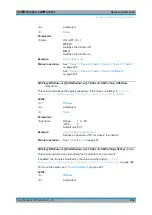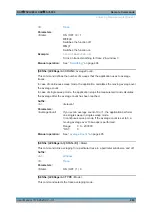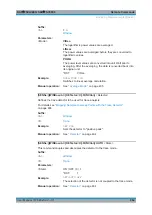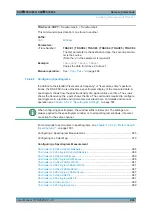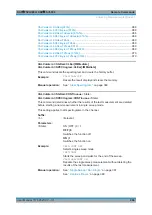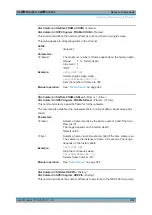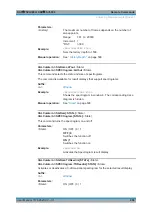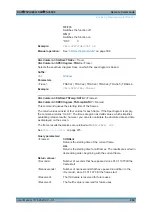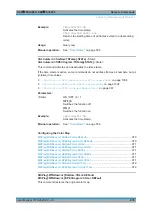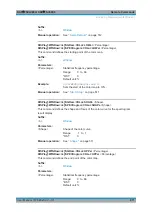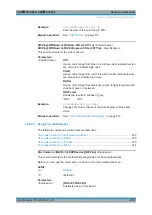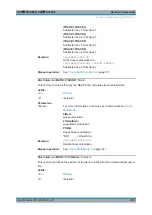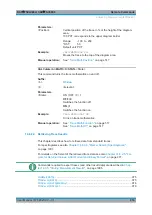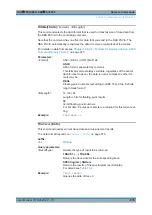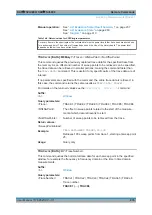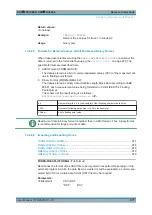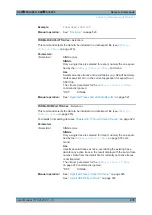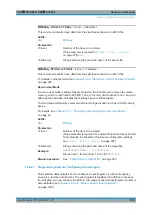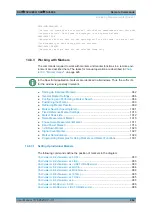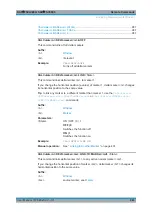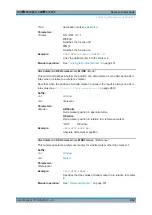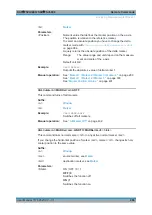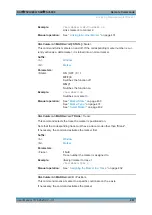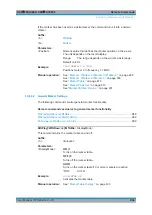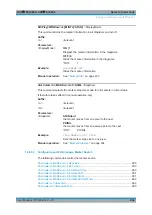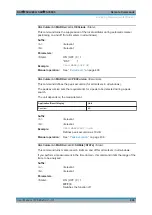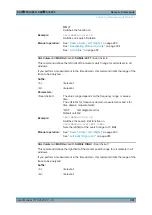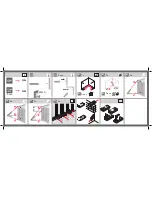
Remote Commands
R&S
®
FSVA3000/ R&S
®
FSV3000
976
User Manual 1178.8520.02 ─ 01
Manual operation:
See
" List Evaluation State (Result Summary)"
See
See
Table 14-6: Return values for SPECtrogram parameter
For every frame in the spectrogram, the command returns the power levels that have been measured, one
for each sweep point. The number of frames depends on the size of the history depth. The power level
depends on the unit you have currently set.
TRACe<n>[:DATA]:MEMory?
<Trace>,<OffsSwPoint>,<NoOfSwPoints>
This command queries the previously captured trace data for the specified trace from
the memory. As an offset and number of sweep points to be retrieved can be specified,
the trace data can be retrieved in smaller portions, making the command faster than
the
TRAC:DATA?
command. This is useful if only specific parts of the trace data are of
interest.
If no parameters are specified with the command, the entire trace data is retrieved; in
this case, the command returns the same results as
TRAC:DATA? TRACE1
.
For details on the returned values see the
command.
Suffix:
<n>
.
Query parameters:
<Trace>
TRACE1 | TRACE2 | TRACE3 | TRACE4 | TRACE5 | TRACE6
<OffsSwPoint>
The offset in sweep points related to the start of the measure-
ment at which data retrieval is to start.
<NoOfSwPoints>
Number of sweep points to be retrieved from the trace.
Return values:
<SweepPointValues>
Example:
TRAC:DATA:MEM? TRACE1,25,100
Retrieves 100 sweep points from trace 1, starting at sweep point
25.
Usage:
Query only
TRACe<n>[:DATA]:X?
<TraceNumber>
This command queries the horizontal trace data for each sweep point in the specified
window, for example the frequency in frequency domain or the time in time domain
measurements.
Suffix:
<n>
.
Query parameters:
<TraceNumber>
TRACe1 | TRACe2 | TRACe3 | TRACe4 | TRACe5 | TRACe6
Trace number.
TRACE1 | ... | TRACE6
Analyzing Measurements (Basics)

